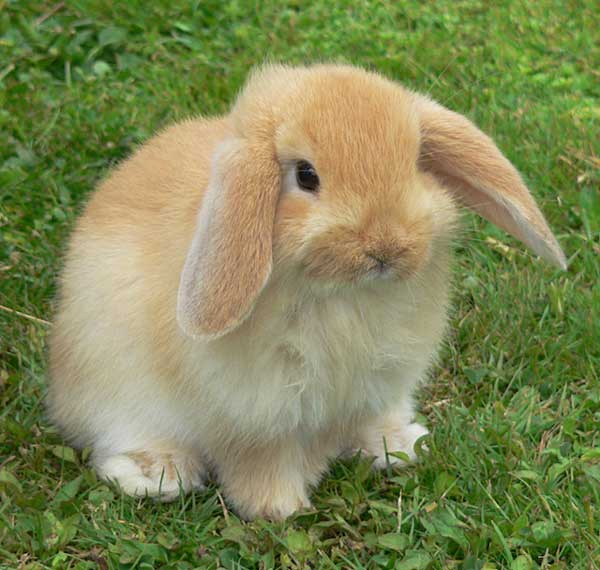Do You Know Everything About the Care and Feeding Required for Young Rabbits or Bunnies? We’ll Tell You Everything in This Article!
WHAT IS A KIT?
A “gazapo” is the term used to refer to a baby rabbit or a young rabbit.

When and where should I get my baby rabbit?
Ideally, it should be an animal that is at least 2 months old, as at this age, they finish their nursing period and begin to become more independent from their mother. Additionally, we are in an early stage of their life where we can introduce stimuli that they will more easily accept than in their adult stage.
We always recommend adoption, although you can also acquire them from a trusted breeder or a specialized store where the animal comes from proper hygiene and health conditions.
In our community, we have shelters and animal welfare organizations that will gladly help you make your decision: Minipows, Rodents Shelter Valencia, Help Exotic Animal Valencia, ANAC, etc.
WHEN IS THE FIRST VETERINARY VISIT RECOMMENDED?
Once you’ve acquired your baby rabbit, it’s important to schedule a first veterinary check-up as soon as possible. During this visit, we will provide information about the vaccination schedule, deworming, the appropriate diet, and address any questions you may have. It’s essential to bring a fecal sample for immediate examination to rule out coccidia. These intestinal parasites can be particularly problematic in young rabbits.
The first vaccines should be administered starting at two months of age, depending on the vaccine manufacturer’s recommendations. They should be vaccinated against diseases like myxomatosis and classical viral hemorrhagic disease (RHD1), as well as the new strain (RHD2). Additionally, they should be treated for external parasites like fleas, ticks, and mites using a spot-on treatment. Internal parasites, both intestinal and Encephalitozoon cuniculi, are also prevented through oral medication.
And if my baby rabbit is less than a month old?
In that case, we will have to bottle-feed them, although it’s preferable that they always be older than this age. We understand that in certain situations, it’s unavoidable, such as in cases of orphaned rabbits. When they are less than a month old, they wouldn’t be able to survive without our help. And after the first month, it’s advisable to supplement their diet of hay and pellets with milk.
HOW TO PREPARE THE BOTTLE?
If the young rabbits have not been able to nurse from the mother in their first days, we should add powdered colostrum. This is the first milk that mothers produce, containing antibodies that provide the necessary defenses for the young rabbit to thrive. Otherwise, there will be few chances of survival.
The most suitable milk to use would be cat milk, although it is low in nutrients, and we will need to enrich it with egg yolk, butter, or margarine (one tablespoon per 250ml of artificial cat milk) to increase the milk’s fat content.
The milk should be prepared each time it is going to be consumed. It is recommended not to store or keep it for the next feedings. It’s important to monitor the temperature.
How to Take Care of a Young Rabbit?
The first thing to consider is that young rabbits need to be stimulated to urinate and defecate. We should rub their genital area with a cotton ball moistened with warm water, both before and after feeding.
Female rabbits usually nurse their offspring once or twice a day, in an intense manner, where the young rabbit fills up as much as possible with milk. For the rest of the day, the mother stays as far away from the burrow as possible to avoid attracting the attention of predators.
On the contrary, we prefer to schedule feedings every 3 hours in small amounts. Our experience tells us that sometimes animals can die trying to emulate maternal behavior.
We should weigh them every day at the same time, usually before the first feeding in the morning, to monitor their weight gain.
From two weeks old, they might start eating hay, but you shouldn’t remove the milk until they are four weeks old.
Is it better to have a male or female?
Actually, it doesn’t matter, as rabbits are social animals that seek the company of their own kind or, failing that, their human family. For this reason, it is recommended to always have more than one rabbit, as they will keep each other company and develop social behaviors among themselves while you are working throughout the day. This is where we recommend spaying or neutering, regardless of gender, because both males and females will exhibit behavioral changes once they reach sexual maturity (especially if you don’t want a large rabbit family). In females, spaying will also prevent a high percentage of reproductive system-related health problems such as uterine or mammary tumors. Although males can also develop these issues, they are less likely to do so.
Summarizing
Before acquiring a rabbit, we must bear in mind that it is an animal that, although it does not require special care due to its herbivorous diet based on hay, does need vaccinations, deworming, and sterilization. Therefore, it involves an economic expense to consider if we want to enjoy the company of our companion for a healthy 10 years.
